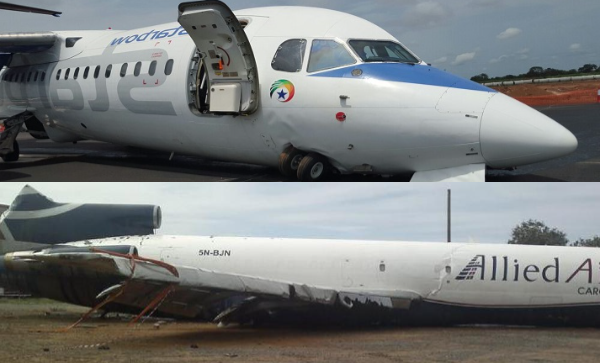From 1969 to 2025, Ghana has experienced several devastating aircraft tragedies in the aviation sector, each leaving an indelible mark on the nation’s history.
This article explores Ghana’s aviation tragedies, highlighting both recent heartbreak and historical incidents that have shaped the nation’s aviation safety discourse.
1. On August 6, 2025, the Ghana Air Forces Harbin Z-9 helicopter crashed in the Adansi Akrofuom District, Ashanti Region, Ghana, after departing from Kotoka International Airport (KIA) in Accra en route to Obuasi for an event addressing illegal mining (galamsey).
The helicopter, carrying three crew members and five passengers, lost radar contact, reportedly struck a tree, and burst into flames in a dense forest near Adansi Brofoyedu. All eight on board perished, with the wreckage found charred beyond recognition. The victims were:
1. Dr. Edward Omane Boamah, Minister for Defence
2. Ibrahim Murtala Mohammed, Minister for Environment, Science, Technology, and Innovation
3. Alhaji Muniru Mohammed Limuna, Acting Deputy National Security Coordinator
4. Dr. Samuel Sarpong, Vice Chairman of the National Democratic Congress (NDC)
5. Samuel Aboagye, former NDC Parliamentary Candidate for Obuasi East
6. Squadron Leader Peter Bafemi Anala, crew member
7. Flying Officer Manaen Twum-Ampadu, crew member
8. Sergeant Ernest Addo Mensah, crew member
The cause remains under investigation, with the black box recovered to aid inquiries. President John Mahama declared three days of national mourning, ordered flags at half-mast, and announced a state funeral for August 15, 2025, at Black Star Square.
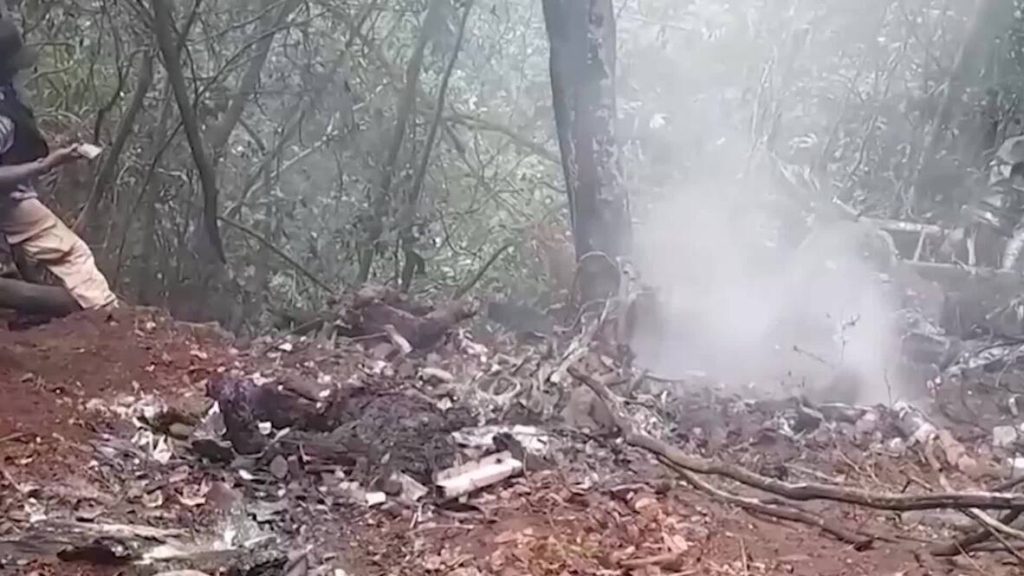
2. On March 19, 2024, the Ghana Air Force Harbin Z-9 helicopter crash-landed near Bonsukrom, Ahanta West Municipal District, Western Region, during a routine offshore powerline inspection of the Atuabo Gas Plant.
The helicopter, carrying 21 passengers (Ghana National Gas Company staff and aircrew), suffered a suspected tail rotor malfunction, causing it to lose balance and crash into trees about 20 meters from the Bonsukrom road. No fatalities occurred, but three passengers were hospitalised, one transferred to Korle Bu Teaching Hospital in Accra.
The Ghana Armed Forces, led by Brigadier General Eric Aggrey-Quashie, launched an investigation with support from the China National Aero-Technology Import and Export Corporation. Locals disputed the GAF’s “emergency landing” claim, describing it as a crash.
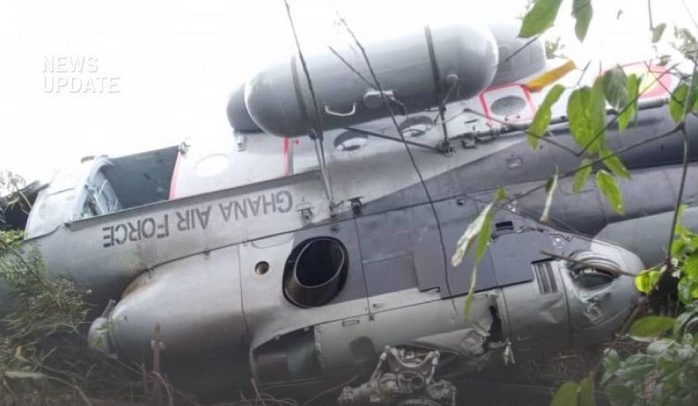
3. On October 6, 2015, a Starbow Airlines BAe 146-300 (flight S9-110, 9G-SBB) from Accra to Tamale overran runway 23 at Tamale International Airport, Ghana, at 08:31 local time, collapsing the nose gear and sustaining irreparable damage. All 76 passengers and crew disembarked safely with no major injuries.
The runway was shortened to 1,860 meters due to construction, and possible factors like rain or winds were noted, though the exact cause was under investigation by the Ghana Civil Aviation Authority. The incident, Starbow’s second major accident in a year, highlighted ongoing safety issues for the airline, which ceased operations in 2017.
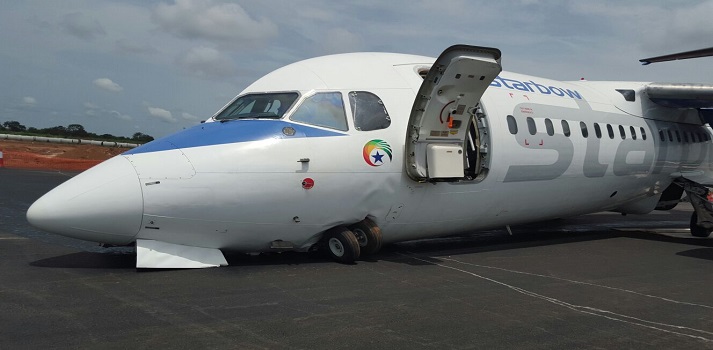
4. On June 2, 2012, a Boeing 727-200F cargo plane (5N-BJN), operated by Allied Air as flight DHV-3 from Lagos, Nigeria, to Accra, Ghana, crashed during landing at Kotoka International Airport. The aircraft, carrying four crew members, overran runway 03 in heavy rain and poor visibility, skidded through the airport’s perimeter fence, and collided with a minibus, a bicycle, and a taxi on an adjacent road.
All four crew members survived with minor injuries, but 12 people on the ground were killed: 10 minibus passengers, one cyclist, and one taxi passenger.
The Ghana Aircraft Accident Investigation Board attributed the crash to pilot error, citing a late touchdown 4,000 feet down the 13,000-foot runway, exacerbated by wet conditions and failure to initiate a go-around. The aircraft was written off, and the incident led to calls for improved runway safety measures at Kotoka.
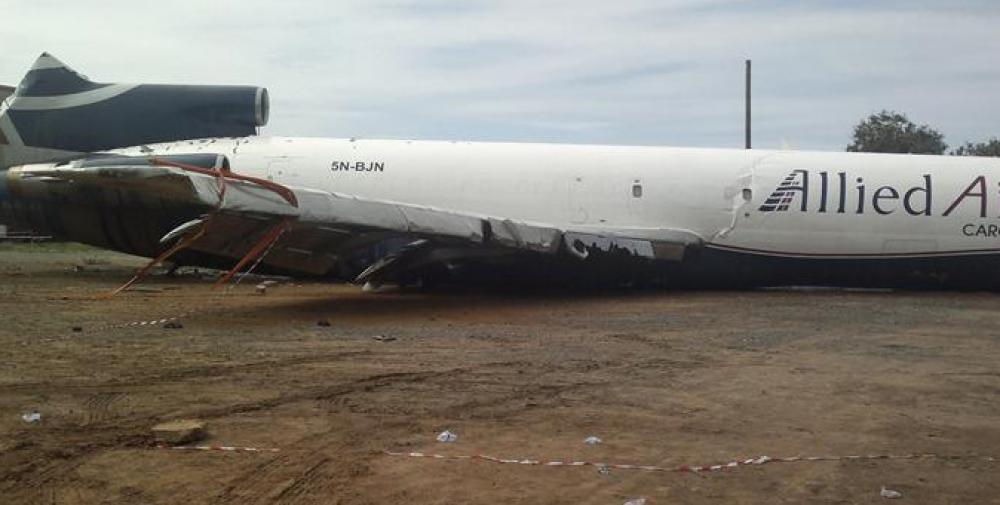 5. On January 12, 2007, a Ghana Air Force Mi-17 helicopter crashed at Adukrom in the Eastern Region while transporting the casket of Air Marshall Michael Akuoko Otu, former Chief of Defence Staff, from Burma Camp, Accra, for burial in his hometown.
5. On January 12, 2007, a Ghana Air Force Mi-17 helicopter crashed at Adukrom in the Eastern Region while transporting the casket of Air Marshall Michael Akuoko Otu, former Chief of Defence Staff, from Burma Camp, Accra, for burial in his hometown.
During a landing attempt at Adukrom Methodist Park, where family, mourners, and dignitaries awaited, the helicopter grazed a church, struck a communication mast and a tree, and crashed, bursting into flames shortly after.
All 13 passengers and 5 crew members escaped unharmed, but Air Marshall Otu’s remains were incinerated in the blaze.
A military pathologist retrieved the ashes, which were interred in a family vault following a burial service on January 13, 2007, at Adukrom Bethel Presbyterian Church. The cause of the crash remains unclear, with the Harmattan haze as a possible contributing factor.
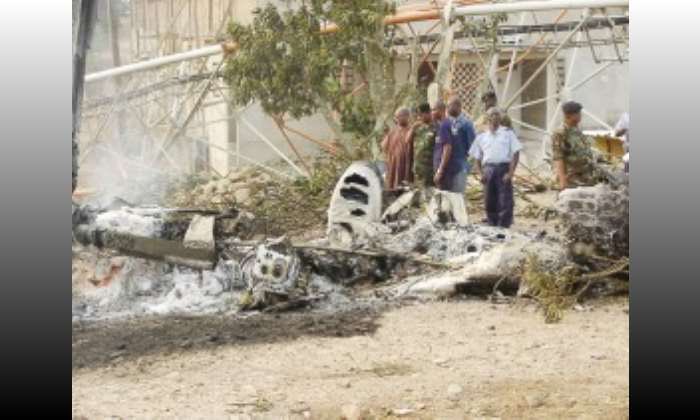
6. March 16, 2002: The Ghana Air Force Augusta Bell 412 helicopter crashed in the Atiwa Forest near Segyimase in the Eastern Region, Ghana, killing all seven on board during a medical evacuation mission from Nkawkaw to the 37 Military Hospital.
Departing from Burma Camp at 07:00 GMT, the helicopter was transporting two critically injured individuals—a soldier and a Ministry of Defence civilian—along with a nurse from Holy Family Hospital.
The victims were Wing Commander Benjamin Acheampong (pilot), Flight Lieutenant Seth Lartey (co-pilot), Corporals Emmanuel Akoensi, Joseph Bosomfi, and Frederick Adu-Buxton, and civilians Mr. Debrah George and Mr. Victor Nyarko (nurse). Contact with Accra’s control tower was lost, and the wreckage was found after a three-day search.
The cause remains unclear, prompting Defence Minister Dr. Kwame Addo-Kufuor to ground all Air Force helicopters for inspection, with support from the Augusta Bell 412 manufacturers.
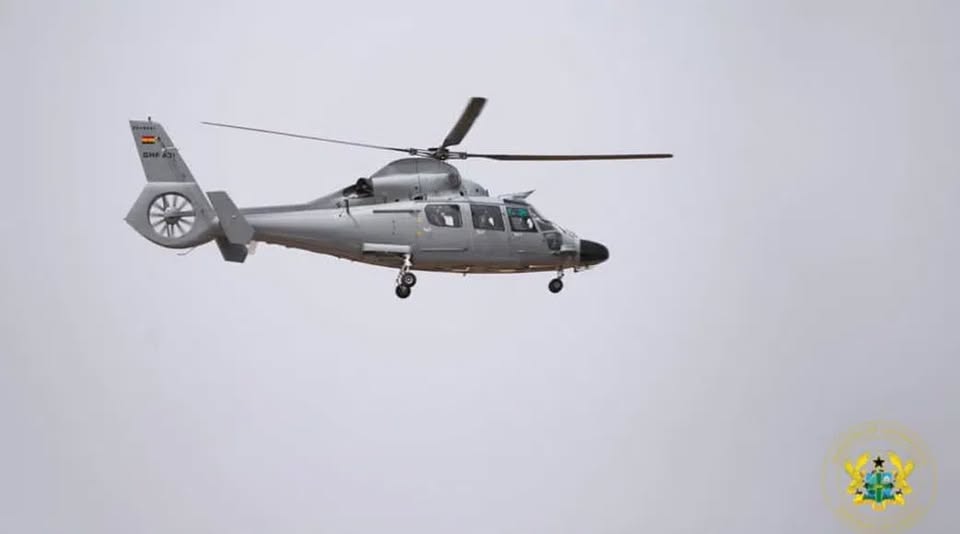
7. On April 4, 2002, the five military personnel were buried at Osu Military Cemetery, their coffins draped in Ghana’s flag. A large crowd, including the late former Vice President Aliu Mahama and a Togolese delegation led by Brigadier General Asani Tidjani, attended.
Wreaths were laid by dignitaries, and an Air Force jet flyover honoured the fallen. Reverend John Kwamina Otoo praised their sacrifice, highlighting the risks of such missions.
8. On June 5, 2000, a Ghana Air Link Fokker F-27 Friendship 600 (Flight GH200), operated for the Ghana Air Force, crashed while landing at KIA, from Tamale in heavy rain and low visibility. The aircraft, carrying 52 passengers and crew, touched down hard nose-first on runway 21, causing the fuselage to break in two.
Seven passengers were killed: Ms. Judith Thompson of PRONET, Dr. Marfo of the Centre for Scientific and Industrial Research (CSIR), Ms. Doris Lanz, a Swiss national with the Institute of Linguistics at the University of Ghana, Legon, Dr. Abass Adams, Mr. Paul Rossen, an American, Leading Aircraftman Alberta Ankrah, and Martin Akamfund, a Nigerian. Several others were seriously injured.
Survivors included pilots Wing Commander William Kekrebasi and Flight Lieutenant Seth Owusu. The pilots reported poor visibility and had attempted landings in Lomé, Togo, and Takoradi due to the downpour but were in contact with the control tower.
The crash temporarily closed the airport. Defence Minister Lt. Col. E.K.T. Donkor stated it was too early to determine the cause, pending an investigation.
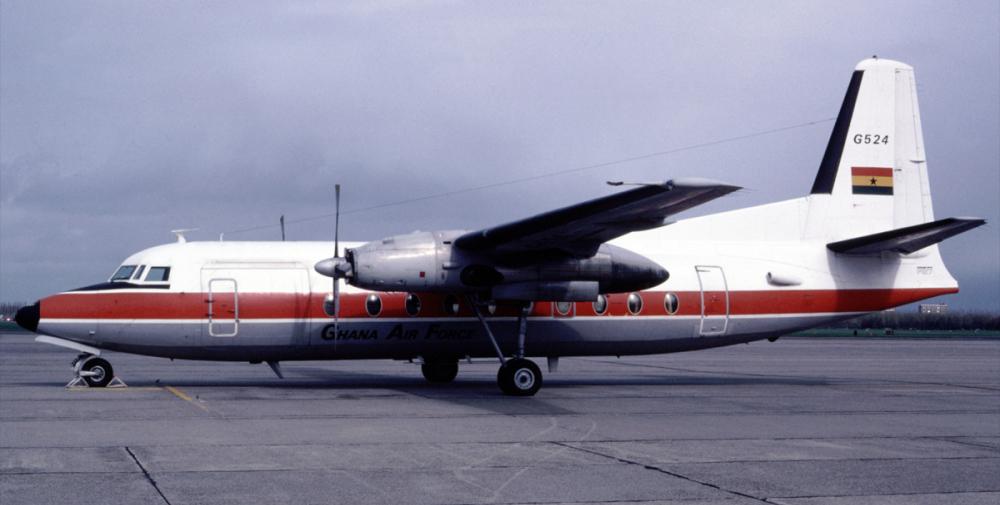 9. On November 13, 1978, a Piper PA-31-350 Navajo Chieftain, operated by Air Inter Gabon, crashed shortly after takeoff from Port Gentil, Gabon, killing the pilot and three passengers.
9. On November 13, 1978, a Piper PA-31-350 Navajo Chieftain, operated by Air Inter Gabon, crashed shortly after takeoff from Port Gentil, Gabon, killing the pilot and three passengers.
The twin-engine aircraft, used for passenger and cargo transport on a charter flight to the Ivory Coast, went down in a wooded area west of Takoradi, near the Ghana-Ivory Coast border, and burst into flames on impact.
The cause of the crash remains uncertain, with possible factors including mechanical failure or pilot error, though no official report has confirmed details.
The incident disrupted local operations and prompted an investigation, but limited records hinder further clarity, including the identities of the victims.
10. On June 5, 1970, a Ghana Air Force de Havilland Canada DHC-2 Beaver (registration G-301) crashed in dense jungle near Daboasi village in the Western Region of Ghana, during a routine flight from Takoradi to Kumasi. All seven occupants were killed.
Rescue teams, assisted by local villagers, took five days to locate and reach the wreckage due to thick vegetation and the remote terrain, approximately 30 miles from Takoradi. The loss was a significant blow to the Ghana Air Force’s limited fleet. Sparse records from the incident make it difficult to determine the definitive cause of the crash.
11. On April 24, 1969, a Douglas C-47A-25-DL, registered as 9G-AAF and operated by Ghana Airways, experienced simultaneous engine failure during its final approach to Takoradi Airport, Ghana.
The aircraft, carrying 22 passengers and crew, was on a domestic flight from Accra. The pilot attempted an emergency landing in a clearing, but the plane crashed approximately 3 kilometres short of the runway threshold.
One passenger was killed, and eight others were injured, three seriously. The cause of the engine failure remains undetermined, with possible factors including fuel exhaustion or contaminated fuel. No official accident report has been publicly released, and investigations at the time were inconclusive.


